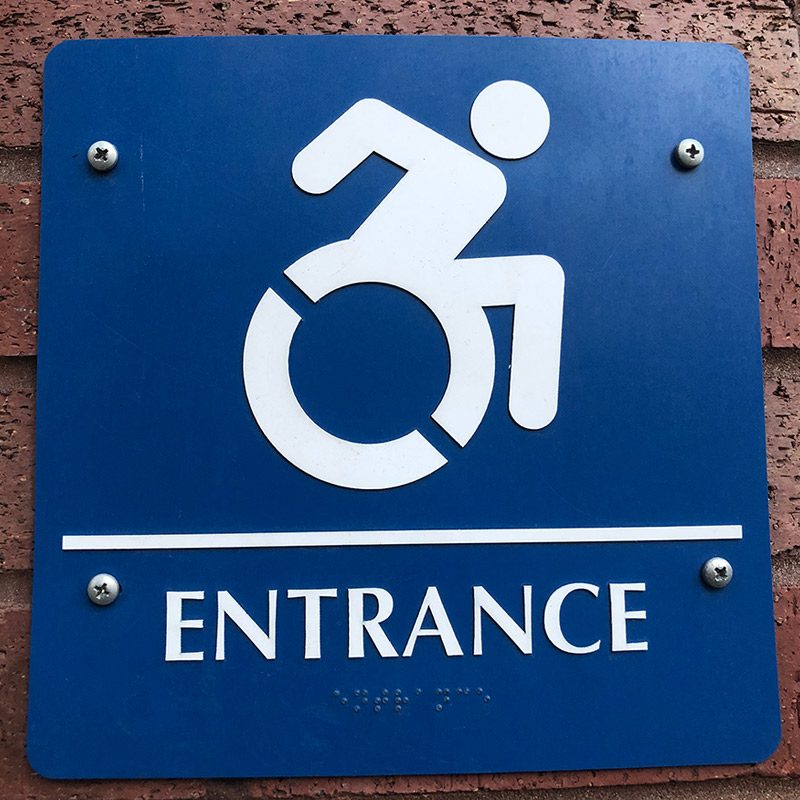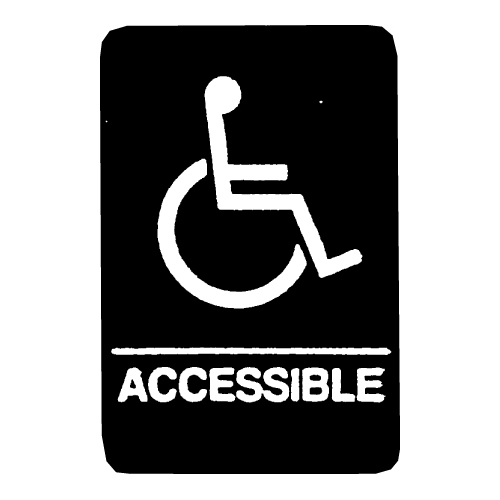Discovering Innovative Designs for Reliable ADA Signs
Discovering Innovative Designs for Reliable ADA Signs
Blog Article
Discovering the Trick Attributes of ADA Indicators for Boosted Access
In the world of availability, ADA indications act as silent yet powerful allies, making certain that spaces are accessible and inclusive for people with handicaps. By incorporating Braille and tactile aspects, these signs damage obstacles for the visually impaired, while high-contrast color pattern and readable fonts satisfy diverse visual requirements. Their tactical positioning is not approximate but instead a calculated initiative to help with seamless navigating. Yet, beyond these features exists a deeper story regarding the evolution of inclusivity and the recurring dedication to creating equitable spaces. What more could these indicators represent in our quest of universal accessibility?
Relevance of ADA Compliance
Making sure conformity with the Americans with Disabilities Act (ADA) is essential for promoting inclusivity and equivalent access in public areas and work environments. The ADA, established in 1990, mandates that all public centers, employers, and transportation solutions suit individuals with impairments, guaranteeing they appreciate the same rights and chances as others. Conformity with ADA criteria not just meets lawful obligations however likewise improves a company's reputation by demonstrating its commitment to diversity and inclusivity.
One of the crucial facets of ADA compliance is the implementation of accessible signs. ADA indicators are created to guarantee that individuals with disabilities can conveniently navigate through spaces and structures.
In addition, adhering to ADA regulations can minimize the danger of legal effects and prospective fines. Organizations that fail to conform with ADA guidelines may encounter penalties or claims, which can be both economically troublesome and harmful to their public picture. Thus, ADA compliance is indispensable to cultivating a fair atmosphere for everybody.
Braille and Tactile Aspects
The consolidation of Braille and tactile components into ADA signage embodies the principles of accessibility and inclusivity. These attributes are important for people that are blind or aesthetically impaired, allowing them to navigate public areas with better independence and self-confidence. Braille, a responsive writing system, is important in supplying created information in a layout that can be easily regarded via touch. It is typically positioned under the equivalent message on signage to ensure that individuals can access the info without aesthetic assistance.
Tactile elements extend beyond Braille and consist of elevated signs and characters. These elements are developed to be discernible by touch, allowing people to recognize space numbers, washrooms, exits, and other critical locations. The ADA establishes certain guidelines concerning the dimension, spacing, and positioning of these tactile elements to maximize readability and make sure consistency across various atmospheres.

High-Contrast Color Pattern
High-contrast color pattern play an essential function in boosting the exposure and readability of ADA signage for people with visual problems. These schemes are important as they take full advantage of the difference in light reflectance in between text and history, guaranteeing that signs are quickly discernible, even from a distance. The Americans with Disabilities Act (ADA) mandates using particular shade contrasts to fit those with limited vision, making it a crucial facet of conformity.
The effectiveness of high-contrast shades exists in their capability to stand apart in various lights conditions, including poorly lit environments and areas with glare. Generally, dark message on a light history or light text on a dark history is employed to accomplish optimum contrast. Black text on a yellow or white history offers a plain aesthetic distinction that aids in quick recognition and comprehension.

Legible Fonts and Text Size
When taking into consideration the layout of ADA signs, the choice of clear font styles and ideal message dimension can not be overemphasized. These components are essential for making sure that indications are obtainable to people with aesthetic problems. The Americans with Disabilities Act (ADA) mandates that typefaces must be sans-serif and not italic, oblique, script, highly ornamental, or of unusual type. These demands assist make sure that the message is quickly understandable from a range which the characters are appreciable to diverse audiences.
The size of the message likewise plays a pivotal duty in accessibility. According to ADA standards, the minimal text height need to be 5/8 inch, and it must enhance proportionally with viewing range. This is particularly important in public rooms where signage requirements to be read quickly and precisely. Uniformity in text dimension adds to a natural visual experience, aiding individuals in browsing atmospheres successfully.
Furthermore, spacing between letters and lines is important to legibility. Ample spacing stops personalities from appearing crowded, boosting readability. By sticking to these standards, developers can substantially improve accessibility, making sure that signage offers its intended objective for all individuals, no matter of their visual capabilities.
Efficient Placement Methods
Strategic placement of ADA signs is essential for taking full advantage of access and guaranteeing conformity with lawful standards. Correctly located signs direct people with disabilities efficiently, assisting in navigating in public rooms. learn this here now Key considerations include height, exposure, and distance. ADA guidelines state that indications ought to be installed at a height between 48 to 60 inches from the ground to ensure they are within the line of sight for both standing and seated individuals. This her comment is here standard height range is critical for inclusivity, enabling mobility device users and people of differing elevations to accessibility details easily.
Furthermore, indications should be placed beside the lock side of doors to enable simple identification prior to access. This placement helps people situate spaces and areas without obstruction. In instances where there is no door, indicators need to be situated on the nearest surrounding wall surface. Consistency in sign placement throughout a center improves predictability, minimizing confusion and improving total individual experience.

Final Thought
ADA indications play an important function in promoting ease of access by integrating functions that attend to the requirements of individuals with specials needs. These aspects collectively foster an inclusive environment, click for info emphasizing the importance of ADA compliance in making certain equivalent accessibility for all.
In the world of ease of access, ADA signs serve as quiet yet effective allies, making sure that spaces are comprehensive and navigable for individuals with handicaps. The ADA, established in 1990, mandates that all public facilities, companies, and transport services suit people with specials needs, guaranteeing they take pleasure in the exact same rights and opportunities as others. ADA Signs. ADA indicators are created to make sure that individuals with disabilities can conveniently navigate via rooms and structures. ADA guidelines specify that signs need to be installed at a height in between 48 to 60 inches from the ground to ensure they are within the line of view for both standing and seated individuals.ADA indicators play a crucial role in advertising ease of access by incorporating functions that address the requirements of individuals with handicaps
Report this page